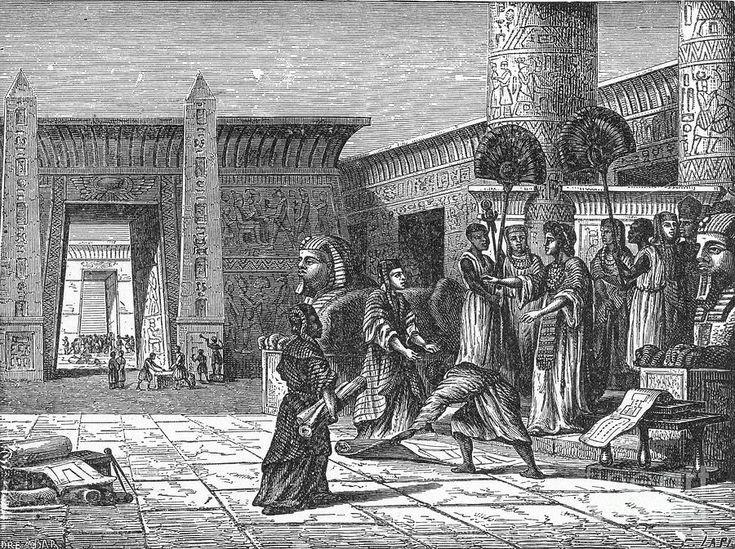
The Most Terrifying Fires in History: Causes and Consequences
The Fire at Notre-Dame Cathedral: A Somber Reminder of the Historic Disasters
The Library of Alexandria: 48 BC
The Library of Alexandria, founded by Ptolemy I Soter, the half-brother of Alexander the Great, in ancient Alexandria around the 290s BC, was ceremoniously opened in a grand building on the Mediterranean coast in 307 BC. Papyrus scrolls were stored on cedar wood shelves in special cases, each labeled with a description of its contents. Literary treasures were collected not only from Greece, Rome, Egypt, the Middle East, and India but also copied and disseminated, preserving the works of Aeschylus, Sophocles, and Euripides up to our time. The Library, known as the Mouseion, housed works on philosophy, history, geography, astronomy, philology, criticism, and medicine. Renowned figures such as the mathematician Euclid, mechanic Hero of Alexandria, and geographer Strabo produced their works here, and the catalog of the Library alone consisted of 120 volumes.

In 48 BC, during the war for the Egyptian throne, which Julius Caesar wished to restore Cleopatra to, he set fire to ships in the Alexandria harbor. The flames spread to the city, and a significant part of the Library, located on the coast, was destroyed. Later, Cleopatra asked her lover Mark Antony to compensate for the lost treasures, but this marked the beginning of the unique Library's decline. In 273, during the capture of Alexandria by Emperor Aurelian's army, the storeroom burned again – this time, the losses were irreparable.
Rome: AD 64
The Great Fire of Rome began on the night of July 19, AD 64. The ancient Roman writer and historian Suetonius blamed Emperor Nero for the tragedy, claiming that during the disaster, Nero, dressed in a theatrical costume, stood on a hill overlooking the blazing city, playing the lyre and reciting a poem about the fall of Troy. However, the famous ancient historian Tacitus, who was a child during the fire, contradicted Suetonius, defending Nero by stating that the emperor was not in Rome when the fire started, but upon hearing of it, rushed back to help extinguish the flames. The fire was only brought under control after six days.

The consequences of the disaster were devastating: ten of Rome's fourteen districts were completely burned. The city was entirely rebuilt afterward. Ancient buildings and monuments were lost, including an 800-year-old statue of Jupiter. Christians living in Rome were blamed for the fire.
London: 1666
The Great Fire of London began on September 2, 1666, and blazed for three days. In the 17th century, almost all buildings in the city were wooden, thatched with straw, and illuminated by open flames, so historians believe the disaster was only a matter of time. The fire started in a bakery – the oven was left unextinguished, embers fell on the floor, and the building caught fire. The flames quickly spread from one house to another, resulting in the destruction of 80% of London. Thirteen thousand buildings and eighty-nine churches were lost, including St. Paul's Cathedral.

Strangely enough, the fire of 1666 ended up benefiting London: the new architect Christopher Wren rebuilt the city with brick houses and designed a new St. Paul's Cathedral.
Kyiv: 1811
The Great Fire of Kyiv in 1811 lasted three days – from July 9 to 11 – and one of the city's districts, Podil, was almost completely consumed. The disaster was caused by dry weather: at the beginning of the summer, the heat was so unbearable that there was no water in the wells, and the Dnipro River dried up – contemporaries noted it became so shallow that one could walk across on the sandbanks formed in the water from Podil to Trukhaniv Island. Writer Fyodor Glinka, who arrived in Kyiv immediately after the fire, described its aftermath. He recounted that upon seeing the devastation caused by the flames, he was shaken. Glinka noted that the fire started at four o'clock in the afternoon: black clouds covered the sky, stone houses burned and cracked, magnificent temples were ablaze, and the wooden pavement smoldered underfoot.

At night, the glow from the fire could be seen from a hundred versts away. Kyiv historian Mykola Zakrevskyi called the disaster "an extraordinary spectacle and a horror." Over two thousand houses, the magistrate, twelve churches, and three monasteries were lost to the flames.
Moscow: 1812
During the War of 1812, after the defeat at Borodino, the Russian army retreated, and at a military council in Fili, it was decided to abandon Moscow without a fight. Kutuzov's maneuver allowed him to trap Napoleon's forces in the city, cutting off their supply route to St. Petersburg, as the Smolensk road, which supplied the city, was in the hands of partisans.

However, Moscow itself had to be sacrificed – the fire that lasted three days began immediately after the army and local population evacuated the city. The flames started in Kitai-gorod and destroyed three-quarters of the buildings; there was no way to extinguish it – all fire brigades had evacuated along with their equipment.
Baltimore: 1904
The fire in Baltimore began on February 7, 1904, due to an unextinguished cigarette. The blaze was of such destructive force that local firefighters could not contain it – rescuers from Washington and New York were called for assistance, but their fire hoses did not match the fixtures on Baltimore's hydrants.

The catastrophe was finally brought under control after thirty-one hours. Residential neighborhoods were spared, but the city's business district was nearly completely burned, destroying one thousand five hundred buildings and resulting in damages amounting to one hundred forty million dollars.




















Comments
0 comment